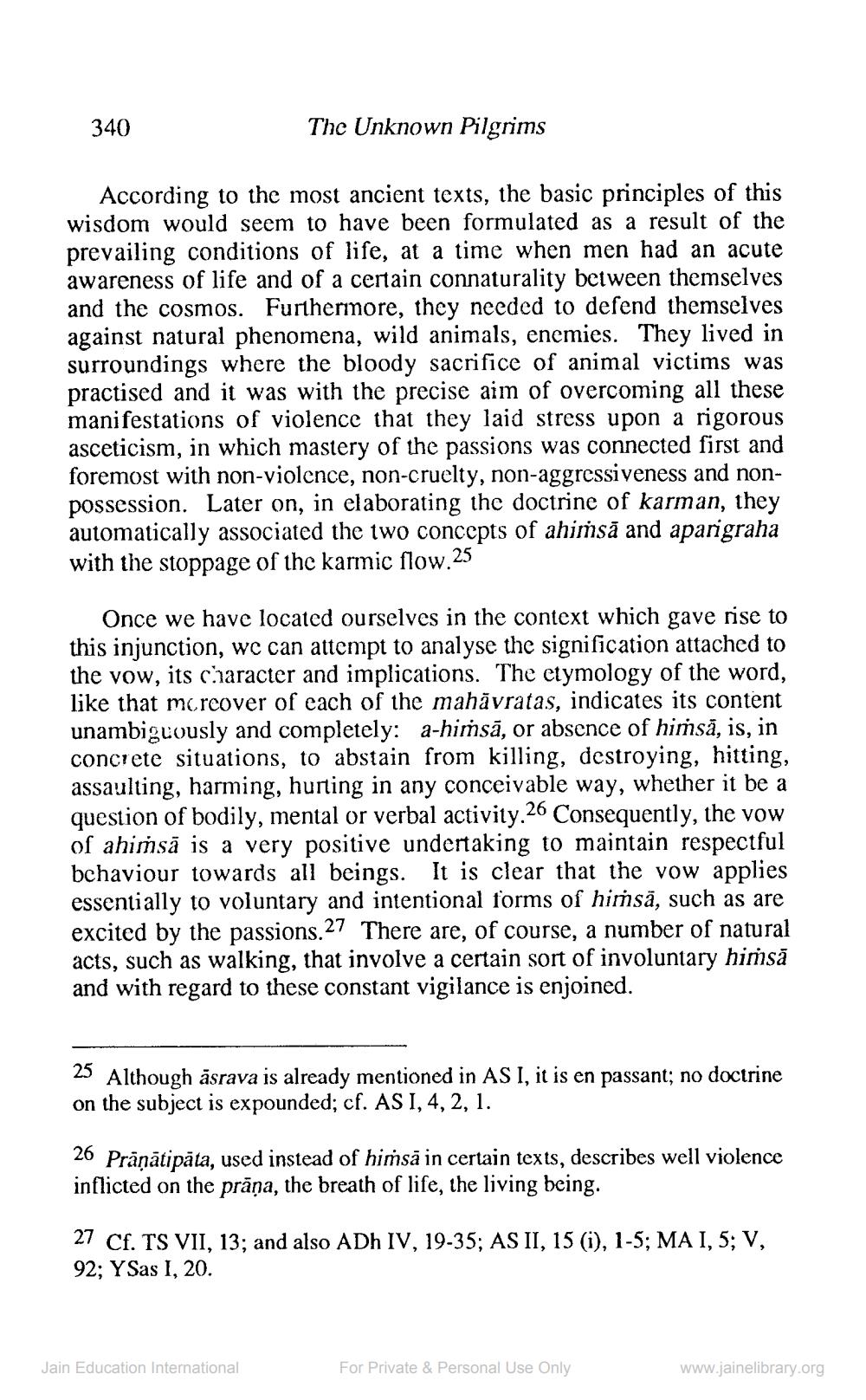________________
340
The Unknown Pilgrims
According to the most ancient texts, the basic principles of this wisdom would seem to have been formulated as a result of the prevailing conditions of life, at a time when men had an acute awareness of life and of a certain connaturality between themselves and the cosmos. Furthermore, they needed to defend themselves against natural phenomena, wild animals, enemies. They lived in surroundings where the bloody sacrifice of animal victims was practised and it was with the precise aim of overcoming all these manifestations of violence that they laid stress upon a rigorous asceticism, in which mastery of the passions was connected first and foremost with non-violence, non-cruelty, non-aggressiveness and nonpossession. Later on, in elaborating the doctrine of karman, they automatically associated the two concepts of ahimsă and aparigraha with the stoppage of the karmic flow.25
Once we have located ourselves in the context which gave rise to this injunction, we can attempt to analyse the signification attached to the vow, its character and implications. The etymology of the word, like that moreover of each of the mahāvratas, indicates its content unambiguously and completely: a-hiṁsā, or absence of hiṁsā, is, in concrete situations, to abstain from killing, destroying, hitting, assaulting, harming, hurting in any conceivable way, whether it be a question of bodily, mental or verbal activity. 26 Consequently, the vow of ahiṁsā is a very positive undertaking to maintain respectful behaviour towards all beings. It is clear that the vow applies essentially to voluntary and intentional forms of hiṁsā, such as are excited by the passions.27 There are, of course, a number of natural acts, such as walking, that involve a certain sort of involuntary hiṁsā and with regard to these constant vigilance is enjoined.
25 Although asrava is already mentioned in ASI, it is en passant; no doctrine on the subject is expounded; cf. AS I, 4, 2, 1.
26 Prāņātipāta, used instead of himsă in certain texts, describes well violence inflicted on the prāņa, the breath of life, the living being.
27 Cf. TS VII, 13; and also AD IV, 19-35; AS II, 15 (i), 1-5; MA 1, 5; V, 92; YSas I, 20.
Jain Education International
For Private & Personal Use Only
www.jainelibrary.org




